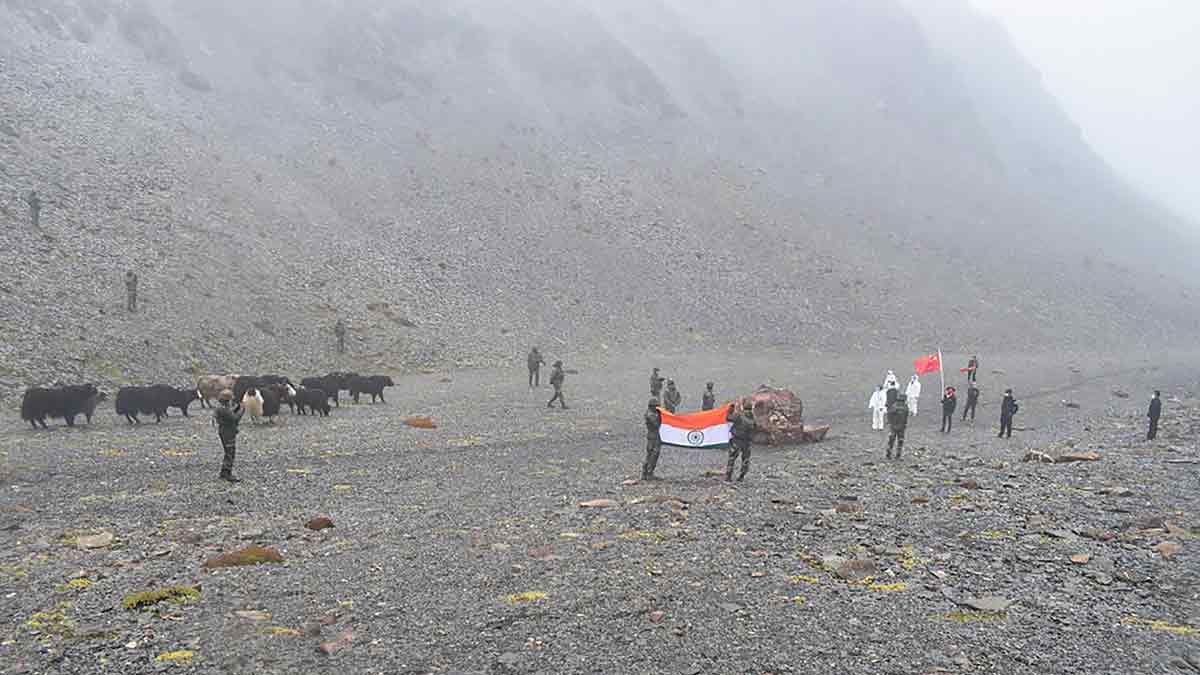Revisiting Galwan and its lessons: India needs clarity, capacity and readiness
 Thin line: The LAC between India and China in east Arunachal Pradesh | PTI
Thin line: The LAC between India and China in east Arunachal Pradesh | PTI
On June 16, 2020, India was confronted with sombre reports on the Galwan clash in the remote heights of Ladakh. The clash between Indian and Chinese forces was not merely a routine altercation; it represented a pivotal point in India-China relations and reverberated throughout the global strategic community. It revealed the vulnerability of current border management arrangements that have maintained a tenuous peace along the 3,440-kilometre-long Line of Actual Control (LAC). This violent episode nearly escalated into war, which was fortunately averted.
The situation in Ladakh has always been tense due to the boundary dispute towards Xinjiang in the north and Tibet in the east. While the overall border issue requires long-term, high-level dialogue, the ambiguity of the LAC leads to frequent day-to-day friction on the ground. Troops from both sides, based on their individual perceptions of the LAC, engage in gradual advancements, aggravating tensions and raising the risk of conflict. The Chinese Army excels in this, employing the "salami slicing" tactics.
Managing conflicts
Following prime minister Rajiv Gandhi's 1988 visit, India-China relations enhanced, resulting in agreements designed to maintain peace along the LAC. These frameworks established several processes, starting with the flag meetings at the forward troops level, regular meetings among border guarding units, and interactions between senior commanders to address serious disputes. Over time, a layered and structured system has been developed, aiming at keeping the peace along one of the most sensitive borders in the world.
Despite these developments, Indian and Chinese troops often confront each other in the disputed areas of the LAC. To manage these face-offs, both nations have laid down protocols, which stipulate that facing troops must immediately halt activities, pull back to their original positions, and not use or threaten force. Unfortunately, in recent years, we have seen an increasing trend of violations of these time-tested protocols, especially by the Chinese side.
The Galwan incident
The Galwan Valley, historically under Indian control, became the focal point of escalating tensions in May 2020 when China abruptly asserted its claim to the area. It started objecting to and interfering with India’s road construction activity in the Galwan Valley, resulting in a prolonged military standoff. Although both sides agreed on June 6, 2020, to a phased disengagement, the fragile truce was soon broken when Chinese troops erected an observation post on the Indian side of the LAC, in clear violation of the agreement.
On June 15, an Indian patrol was dispatched to verify the situation and seek the removal of the Chinese encampment. A regular verification mission, which could have been resolved through dialogue, turned into a violent clash with soldiers from both sides engaged in a lethal hand-to-hand fight utilising fists, stones, and improvised weapons. Colonel Santosh Babu, commanding officer of 16 Bihar Regiment, sadly lost his life during the intense confrontation. The incident resulted in the deaths of 20 Indian soldiers and, by most estimates, around 40 Chinese troops—marking the deadliest clash between India and China in over four decades.
Operationalising lessons learned
Even without escalating to full-scale war, these clashes severely strain bilateral relations, hardening positions and diminishing prospects for a long-term solution; thus, they need to be minimised. However, such incidents will persist until a mutual agreement on the alignment of the LAC is reached. While de-escalation happened in the entire Eastern Ladakh in October 2024, no progress could be made to define the LAC despite the meeting of the special representatives held at Beijing on December 18, 2024. India and China must therefore make serious efforts to come to an understanding on the exact alignment of the LAC.
During the clash, the Chinese were able to move reinforcements at a fast pace. This was facilitated by the presence of well-developed infrastructure on the Chinese side, which allows rapid deployment and switching of forces. While a lot of work is being done on the Indian side too, there is a need for a larger budget to construct better roads, helipads, and airfields.
The Chinese reinforcements also moved in without being detected, which highlighted the need for an effective real-time surveillance network along the LAC. The deal for the acquisition of 31 Predator drones is a game changer and will add immensely to the surveillance capability at the strategic level. However, India must deploy additional defence satellites and acquire more surveillance equipment, including drones for its field formations.
Logistically too, China is much better prepared along the LAC, and the same was evident in Galwan. The Indian Army need to address this shortfall by creating well-protected underground storage facilities at likely face-off sites.
Conclusion
India and China must make every effort to avoid a recurrence of incidents like the Galwan clash, which severely damaged bilateral trust and brought relations to a new low. A key step in this direction is the removal of ambiguities about the LAC through clear demarcation. India must, however, be prepared for all eventualities, including the possibility of major conflict. To this end, it is imperative to systematically address and eliminate the existing asymmetries between the two militaries. This includes bridging gaps in border infrastructure, enhancing logistics and mobility in high-altitude terrain, improving surveillance and situational awareness, and modernising equipment and force postures.
The opinions expressed in this article are those of the author and do not purport to reflect the opinions or views of THE WEEK.
Defence